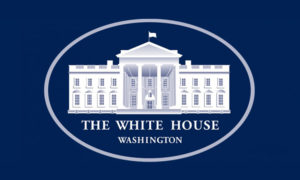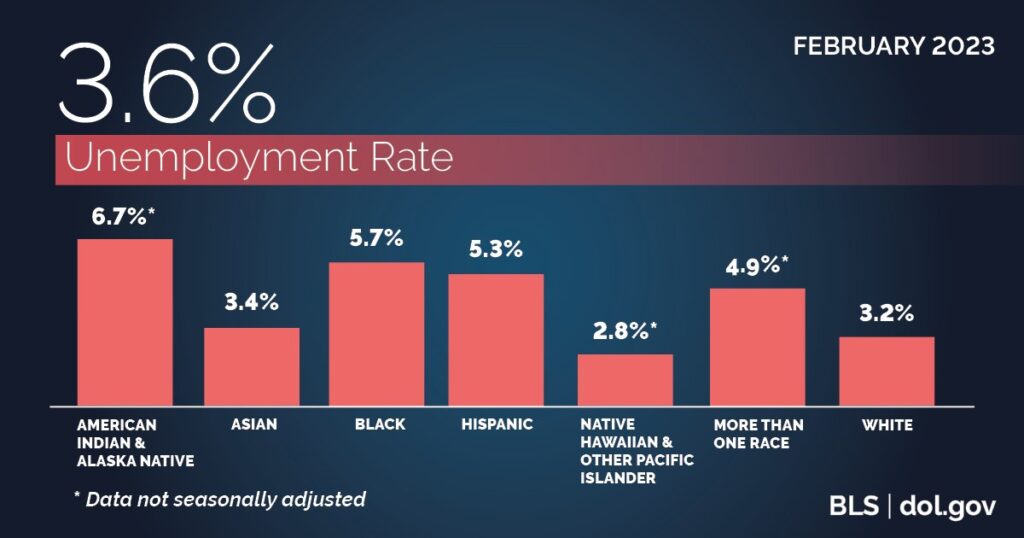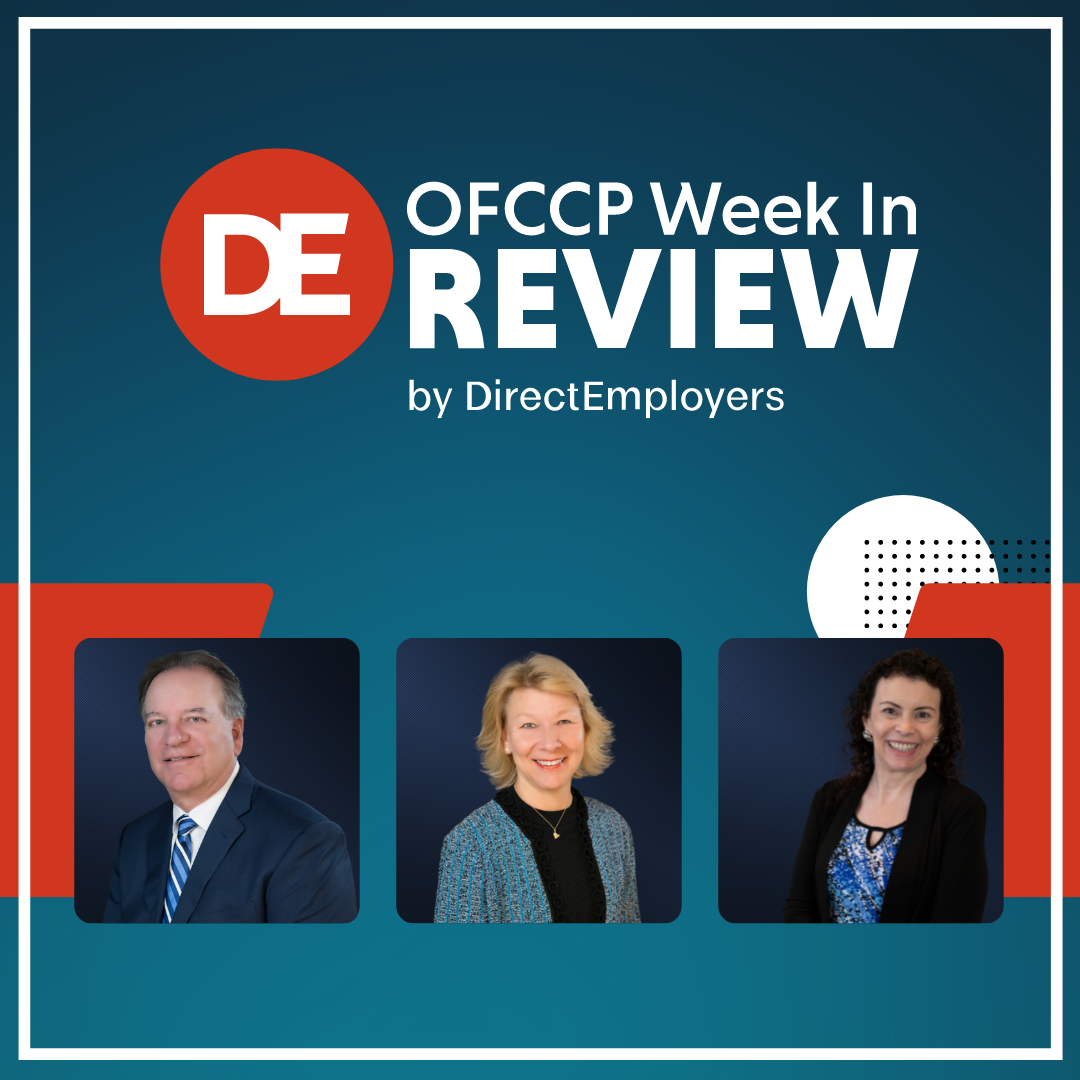
- OFCCP Requested Public Comments (Again) on OFCCP’s Job Listing, AAP, “Benchmarks for hiring” and Self-ID for Protected Veterans
- U.S. BLS JOLTS Report Shows Shrinking Jobs Market
- White House Budget Proposal Is Unrealistic, a Nonstarter for Congress and Sets the Stage for a Political Fight Over the U.S. Debt Ceiling
- OFCCP Updated FOIA Objection Portal with “Final” Non-Objector List
- NLRB Rescinded Four Provisions of Trump-Era NLRB Union Election Rule Struck Down by Federal Appellate Court in January
- USBLS Reports Shrinking U.S. Labor Force; Unemployment Rate Increased to 3.6%
- Marty Walsh’s Concluded His Time as Secretary of Labor
- In Brief
- Looking Ahead: Upcoming Date Reminders
Wednesday, March 8, 2023: OFCCP Requested Public Comments (Again) on OFCCP’s Job Listing, AAP, “Benchmarks for hiring” and Self-ID for Protected Veterans
Two mysteries remain unexplained

While there appears to be no controversy as to either the original VEVRAA November 2022 ICR or its identical VEVRAA ICR of last week, OFCCP left two things unexplained. First, OFCCP provided no discussion of why it was suddenly repeating verbatim its November 16, 2022 ICR (as to VEVRAA) without any proposal to change anything (either in November 2022 or last week). Second, OFCCP offered no explanation as to why it did not repeat the November 2022 ICR also as to Section 503 (which was also part of OFCCP’s original November 2022 ICR). This mystery is particularly intriguing since the VEVRAA and Section 503 AAP and self-identification requirements run parallel with each other (not the “Job Listing” requirements (unique to VEVRAA) or the “Benchmarks for hiring” (also unique to VEVRAA)).
Federal agencies very rarely repeat a request for public Comment due to the out-of-pocket cost for Federal Register pages, the delay to go forward with their proposal, and the cost of agency and OMB personnel to manage an ICR to conclusion. When agencies undertake a “do-over” Comment request, they do so typically only when they realize, after-the-fact, that they wish to make a substantive change to their regulatory requirements they did not originally propose and thus did not properly alert the public (not on the table here). A second possible explanation is that they made a technical mistake in their original Notice to the public (which does not appear to be on the table here since OFCCP did not repeat the 503 ICR which was bundled in the same November 16, 2022, Federal Register Notice to the public containing the VEVRAA ICR).
Last week’s OFCCP Federal Register Notice itself references its earlier OFCCP November 16, 2022, ICR which we covered here. While not mentioned in its public Notice, OFCCP also quietly submitted to OMB earlier this month what is known in OMB-speak as a “Supporting Statement.” That Statement was very similar to OFCCP’s prior statements about its original November 2022 ICR.
However, OFCCP’s Statement did add a new discussion about the lone public Comment OFCCP had received in response to its original November 16, 2022, ICR. That discussion implied that OFCCP had rejected the suggestions made in the Comment. That Comment was from an employer association (the Center for Workplace Compliance, formerly EEAC) which had, among other things, suggested changes to the definitions of key personnel activity terms used in the so-called “data metrics” analyses covered federal Government contractors are obligated to undertake pursuant to Section 503 and VEVRAA. The rejection of CWC’s suggestions also seems clear given that both the new OFCCP Federal Register Notice seeking public Comments and the previous November 16, 2022 Notice state that OFCCP is not proposing any substantive changes to its existing VEVRAA ICR.
Comments are due on April 7, 2023, and may be submitted here.
How We Got Here
In our report on OFCCP’s initial November 16, 2022 Federal Register Notice, we explained that OFCCP published proposed changes to its Disability Self-Identification Form to update preferred language used to describe specific disabilities. That proposal was part of a Federal Register notice containing OFCCP’s request to OMB to extend approval of its ICRs under VEVRAA and Section 503 of the Rehabilitation Act (“Section 503”). OMB’s current approvals for these ICRs expire on April 30, 2023, and May 31, 2023, respectively.
The November 2022 Supporting Statement for the VEVRAA Information Collection Requirement (ICR) went on to state that OFCCP was not proposing to collect any new information. OFCCP also decreased its burden hours estimates for the two ICRs due to “a decrease in the number of contractor headquarters and contractor establishments since the last authorization.” The comment period on the November Federal Register Notice closed on January 17, 2023. OMB received only the one public Comment we reference above (see here, and click on “Browse all Comments”).
The OMB website reveals that it received a new VEVRAA ICR information request on March 8, 2023 (the same day as the Federal Register publication). Further, the OMB website (but not the Federal Register notice) also shows a new Supporting Statement dated March 1, 2023. This new Supporting Statement addressed the sole comment OMB received during the comment period on the initial, November 16, 2022 notice.
Wednesday, March 8, 2023: US BLS JOLTS Report Shows Shrinking Jobs Market
Job Openings Decreased by 410,000 in January
Voluntary Quits Declined as Employees Find Fewer Available Jobs
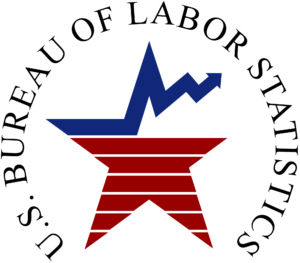
The largest decreases in job openings were in construction (-240,000), accommodation and food services (-204,000), and finance and insurance (-100,000). The number of job openings increased in transportation, warehousing, and utilities (+94,000) and in nondurable goods manufacturing (+50,000). The December numbers noted are revised figures.
The number of hires rose slightly at 6,372,000 in January (the rate was 4.1 percent) compared to 6,251,000 in December (4.0 percent).
Total separations also did not change much at 5,902,000 in January compared to 5,906,000 in December. The rate remained steady at 3.8 percent. Quits decreased to 3,884,000 in January compared to 4,091,000 in December (-207,000) and the rate decreased slightly at 2.5 percent compared to 2.6 percent in December. Layoffs and discharges increased a bit at 1,716,000 in January (1.1 percent rate) compared to 1,475,000 in December (1.0 percent rate).
BLS posted interactive graphs here.
Three-Month Comparison Chart of Job Openings vs Jobs Filled
Our below table reports the number of available jobs (as taken from the revised JOLTS reports) and the number of jobs filled (as taken from the “Economic Situation Report”) from the last four months of available data.
| Reports | October | November | December | January |
|
JOLTS available jobs Prior/mo comparison |
10,471,000 (383,000 < September*) |
10,746,000 (275,000 > October) |
11,234,000 (488,000 > November) |
10,824,000 (410,000 < December) |
| Total jobs (+/-) added | 263,000 | 290,000 | 260,000 | 517,000 |
*September Job Openings were 10,854,000
Note: BLS is scheduled to release the JOLTS Report for February 2023 on Tuesday, April 4, 2023.
Thursday, March 9, 2023: White House Budget Proposal Is Unrealistic, a Nonstarter for Congress and Sets the Stage for a Political Fight Over the U.S. Debt Ceiling
Requested OFCCP Budget is Again Unrealistic
OFCCP Also Requested Two-Year Budget Authority
President Biden announced his $6.8 trillion budget proposal for fiscal year (FY) 2024. The White House Office of Management and Budget’s (OMB) Appendix to the FY 2024 Budget document contains the specific allocations for each agency. The Department of Labor (DOL) posted its Congressional Budget Justification (“CBJ”) with details on the requested amounts allocated for each subagency within the Department.
Labor Department’s Specific Budget Requests
The list below details the amounts the DOL requested in its FY 2024 CBJ compared with the numbers allocated in the FY 2023 appropriations law. The percentage increase numbers are rounded up or down to the nearest two decimal points. “FTEs” stands for full-time equivalent employees. Page references below are all to the print copy pages (to match up with the Table of Contents) of the CBJ. (Also see the DOL’s landing page on the FY 2024 budget.)
Overall, the President requested $15.1 billion for the USDOL (page 6), which is a $1.5 billion boost over the $13.6 billion in the enacted FY 2023 budget. That marks an 11.03 percentage increase for the Department of Labor as a whole.
OFCCP (page 37) – 36.48% increase sought:
OFCCP’s FY 2024 request is $151,462,000 and 620 FTEs. Its FY 2023 allocation was $110,976,000 and 495 FTEs.
The OFCCP request “includes a program increase of $36,075,000 and 125 FTEs to increase the agency’s workforce and technological capacity as our country makes a once-in-a-generation investment in its infrastructure through the Bipartisan Infrastructure Law (BIL) and other key Federal investments in our economy,” the USDOL CBJ noted.
“In addition, the FY 2024 Budget requests that the OFCCP annual appropriation become two-year funding. With two-year budget authority, OFCCP would have greater Labor capacity to maintain staffing even if operating under a continuing resolution,” the USDOL CBJ stated.
Other DOL Agencies
Bureau of Labor Statistics (page 49) – 20.37% increase sought:
The BLS FY 2024 request is $758,302,000 and 2,263 FTEs. Its FY 2023 allocation was $629,952,000.
Note: the above numbers do not include the “Trust Funds” line item, which has consistently been $68,000 for FY 2022 (enacted), FY 2023 (enacted), & the FY 2024 request.
Employment and Training Administration (page 7) – 6.76% increase sought:
ETA’s FY 2024 request is $4,420,684,000. Its FY 2023 allocation was $4,140,911,000.
Office of Disability Employment Policy (page 57) – 40.81% increase sought:
ODEP’s FY 2024 request is $60,549,000 and 64 FTEs. Its FY 2023 allocation was $43,000,000 and 60 FTEs.
Office of Labor-Management Standards (page 40) – 10.21% increase sought:
The OLMS FY 2024 request is $53,469,000 and 226 FTEs. Its FY 2023 allocation was $48,515,000 and 208 FTEs.
Occupational Safety and Health Administration (page 42) – 16.82% increase sought:
OSHA’s FY 2024 request is $738,668,000 and 2,505 FTEs. FY 2023 allocation was $632,309,000 and 2,073 FTEs.
Veterans’ Employment and Training Service (page 62) – 3.66% increase sought:
The VETS FY 2024 request is $347,627,000 and 265 FTEs. Its FY 2023 allocation was $335,341,000 and 237 FTEs.
Wage and Hour Division (page 34) – 31.14% increase sought:
WHD’s FY 2024 request is $340,953,000 and 1,863 FTEs. Its FY 2023 allocation was $260,000,000 and 1,474 FTEs. Thus, the request marks a 31.14 percentage increase.
Note: The above numbers do not include the “Wage Hour H-1B” line-item budget numbers.
EEOC – 5.71% increase & NLRB – 25.66% increase sought
The EEOC’s CBJ is here. The President proposed increasing the EEOC budget to $481,000,000. The EEOC’s FY 2023 allocation was $455,000,000.
The NLRB’s CBJ is here. The President is requesting $376,000,000 for the NLRB. Its FY 2023 allocation was $299,224,000.
Assorted reaction statements
Following the announcement, various politicians and advocacy groups issued the typical round of reaction statements. Some of the various statements include:
- President Biden’s statement;
- Outgoing Secretary of Labor’s Marty Walsh’s statement;
- Senate HELP Committee Ranking Member Bill Cassidy’s (R-LA) statement;
- House Education and the Workforce Committee (EWC) Chairwoman Virginia Foxx’s (R-NC) statement; and
- House EW Ranking Member Bobby Scott’s (D-VA-03) statement.
Friday, March 10, 2023: OFCCP Updated FOIA Objection Portal with “Final” Non-Objector List
Responses to Final Non-Objector List Due March 17

Contractors have until March 17, 2023, to review this “Second Updated List” and notify OFCCP if they believe their entity has been improperly included on this updated list of “non-objectors” regarding a reporter’s Freedom of Information Act (FOIA) request for EEO-1 consolidated Component 1 (Type 2) Survey data. The reporter works for the Center for Investigative Reporting (“CIR”) located in northern California. The CIR reporter is not sure exactly what it will do with the data once it gets it but wants to “scrutinize the data” and report on federal contractor diversity as we reported here in late August 2022.
As to this Second Updated List, “OFCCP has not yet made any determinations regarding the substance or merit of these entities’ responses or objections and has removed these entities from the initial disclosure to CIR pending OFCCP’s determinations,” the latest Response Portal update stated. Moreover, the Second Updated list is OFCCP’s “final posting of a list of non-objectors,” the agency asserted.
Which List is Which?
Our most recent previous report detailing the ins and outs of this ongoing saga appeared in our February 20 WIR “Bonus Feature” here. As we explained in that previous story, OFCCP’s “Second Updated List” is actually the third such “Non-Objector Contractor List” that OFCCP has published. The fourth OFCCP “Non-Objector Contractor List” will be the one OFCCP releases to the CIR sometime on or after March 17, 2023, with any additional corrections OFCCP receives by March 17, 2023.
“As required by FOIA, after the close of all response periods, we will release the Type 2 data of contractors that have not objected to the release of their data. Because we have received three or more requests for the same information, FOIA requires that we post the data released to CIR on our Employment Information Reports (Standard Form 100) webpage,“ OFCCP explained in the March 10 update.
How to Respond
Contractors that believe they were improperly included on the Second Updated List, may object by sending an email to OFCCP-FOIA-EEO1-Questions@dol.gov, including at a minimum the following information: (1) all addresses associated with your entity for the reporting years in which your entity is listed; (2) your entity’s EEO-1 unit number; (3) any other entities associated with your organization (including, e.g., merged companies and subsidiaries) that you intend to cover in your objection, with any additional entity information needed to confirm the objection (including EEO-1 unit number and address, if different from those identified in response to (1) and (2)).
All responses must be received no later than March 17, 2023, at 11:59 p.m. EST, via the email address above and must include the contractor’s EEO-1 unit number(s).
Ongoing Litigation Update: Initial Status Hearing Now Slated for April 13
As we reported in our February 20 “Bonus Feature,” the CIR filed a lawsuit in the U.S. District Court for the Northern District of California against the U.S. Department of Labor under FOIA on November 15, 2022. The lawsuit seeks to compel OFCCP to process and release all Type 2 (consolidated) EEO-1 Report data of federal contractors and first-tier subcontractors submitted in reporting years 2016 to and through 2020. The Labor Department filed an Answer to the Complaint in the case – Center for Investigative Reporting v. United States Department of Labor (Case No. 3:22-cv-07182-WHA) – on January 18, 2023.
OFCCP’s March 10 Response Portal update added that the current litigation “follows a decision in the same court involving the same plaintiff holding that certain companies’ EEO-1s were not protected by Exemption 4 of the FOIA. Ctr for Investigative Reporting v. Dep’t of Labor, 424 F. Supp. 3d 771 (N.D. Cal. 2019).” The text of that decision is available here.
Although OFCCP’s Response Portal first stated on February 14 (and continues to state) that “an initial Case Management Conference before Senior Judge William Alsup [was] scheduled for February 16, 2023,” the court’s webpage with the judge’s schedule showed then that this hearing was rescheduled to March 9, 2023. However, currently, the judge’s calendar shows that it is now slated for Thursday, April 13, 2023.
Friday, March 10, 2023: NLRB Rescinded Four Provisions of Trump-Era NLRB Union Election Rule Struck Down by Federal Appellate Court in January
Implementation of Two Other Provisions Delayed Until September 10, 2023
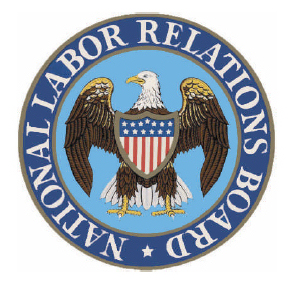
The NLRB also filed another, separate notice of a Final Rule staying the effective date of two other provisions of the 2019 Rule – that the appeals court did not strike down but did send back to a lower court for further proceedings – to September 10, 2023. The Board will continue to postpone implementation of those provisions as litigation remains pending and while the NLRB considers whether to revise or repeal the 2019 Rule.
Fellow Democrats Gwynne A. Wilcox and David M. Prouty joined Board Chairman Lauren M. McFerran in issuing the two Final Rules. Republican Member Marvin E. Kaplan dissented from both actions.
How We Got Here (which explains the specific provisions the NLRB has now rescinded)
In March 2020, the AFL-CIO sued the NLRB in the federal district, challenging the validity of the 2019 Rule. Among other claims, the union asserted that the following five provisions of the 2019 Rule ran afoul of the Administrative Procedure Act (APA):
- the reinstitution of pre-election hearings for litigating eligibility issues;
- timing of the date of the election;
- voter list timing;
- election observer eligibility; and
- timing of Regional Director certification of representatives.
In January 2023, we reported that a panel of D.C. Circuit judges ruled, 2-1, that the (Trump) NLRB violated the Administrative Procedure Act (APA) by failing to seek formal APA Rulemaking through public “Notice and Comment” before adopting three changes to its 2019 Rule to increase the time for union elections (AFL-CIO v. NLRB, Case Nos. 20-5223 and 20-5226). Although the Board issued the 2019 Rule without a public notice and comment period, the Trump NLRB asserted at the time that the Rule fell within the APA’s exception for “rule of agency organization, procedure, or practice” (at 5 U.S.C. §553(b)(A)).
The appellate court ruled that three provisions – the rules regarding the eligible employee-voters list, the timeline for certification of election results, and election-observer eligibility – were substantive changes that did not fall within the APA’s procedural exception allowing the Board to by-pass formal APA Rulemaking. This meant that the NLRB should have undertaken formal APA Rulemaking before issuing these three of its new Rules. Those three provisions never took effect because they were previously enjoined by the U.S. District Court for the District of Columbia.
In addition, the appeals court majority found that a provision in the 2019 Rule regarding ballot impoundment procedures when a request for review is pending (one of the provisions that took effect as scheduled) violated the National Labor Relations Act (“NLRA”). Under that provision, if a party had filed a request for review of a direction of election within ten business days of its issuance by the Regional Director, and the Board then either granted the request or did not rule on it before the election occurred, then “all ballots shall be impounded and remain unopened pending such ruling or decision.” The D.C. Circuit ruled that the impoundment provision violated Section 3(b) of the NLRA (29 U.S.C. § 153(b)) because it was a prohibited stay of action by Regional Directors.
What Did the Two Final Rules Do?
The Board’s first March 10, 2023, Final Rule rescinded all four of the above provisions the D.C. Circuit has struck down – the rules regarding the eligible employee-voters list, the timeline for certification of election results, the election-observer eligibility, and ballot impoundment procedures – and reinstated previous regulations.
The D.C. Circuit panel majority also held that the two other provisions that the union claimed were invalid under the APA – the reinstitution of pre-election hearings for litigating eligibility issues and the timing of the date of the election – fell within the APA’s procedural exception allowing the Board to bypass formal APA rulemaking. Because those two provisions are rules of agency procedure, they were validly issued without a notice and comment period, the D.C. Circuit held. However, the appeals court sent the case back to the district court to consider other grounds on which the provisions had been challenged as unlawful. Moreover, those two provisions have never been in effect because the U.S. District Court for the District of Columbia previously enjoined them.
The NLRB’s other March 10, 2023 notice stayed the effective date of those two provisions to September 10, 2023. The notice explained that the district court’s injunction will be lifted on or around March 10 due to the appellate court’s ruling. At that point, these two previously enjoined provisions would – if not for the stay – go into effect pursuant to the original May 31, 2020, effective date.
In a statement, the NLRB said it will continue to postpone implementation of those provisions as litigation remains pending and while it considers whether to revise or repeal the 2019 Rule, including potential revisions to those two provisions.
Friday, March 10, 2023: USBLS Reports Shrinking U.S. Labor Force; Unemployment Rate Increased to 3.6%

The unemployment rate was 3.4% in January. BLS revised down employment growth in December and January by a combined 34,000 jobs. Notable job gains occurred in leisure and hospitality, retail trade, government, and health care. Employment declined in information and in transportation and warehousing. The number of unemployed persons, at 5.9 million, also edged up in February.
Long-term Unemployment Numbers
The number of persons jobless less than 5 weeks increased by 343,000 to 2.3 million in February, offsetting a decrease in the prior month. The number of long-term unemployed (those jobless for 27 weeks or more), at 1.1 million, changed little in February and accounted for 17.6 percent of the total unemployed.
Major Worker Groups: Hispanics Hit Hardest
The percentage rate of Hispanic unemployment increased the most (8/10ths of 1%) among all measured groups. The BLS chart below illustrates the unemployment rates for the major worker groups.
|
The Employment Situation – January 2023 |
||||
| Unemployment Rate | December 2022 | January 2023 | February 2023 | Feb 2020 Pre-Pandemic |
| National (Seasonally adjusted) |
3.5% | 3.4% | 3.6% | 3.5% |
| White | 3.0% | 3.1% | 3.2% | 3.0% |
| Black | 5.7% | 5.4% | 5.7% | 6.0% |
| Asian | 2.4% | 2.8% | 3.4% | 2.5% |
| Hispanic (Seasonally adjusted) |
4.1% | 4.5% | 5.3% | 4.4% |
| Native Hawaiians & Other Pacific Islanders | 4.4% | 6.2% | 2.8% | 2.7% |
| Two or More Races (Not seasonally adjusted) |
6.0% | 6.1% | 4.9% | 6.1% |
| Men (20+) | 3.1% | 3.2% | 3.3% | 3.2% |
| Women (20+) (Seasonally adjusted) |
3.2% | 3.1% | 3.2% | 3.1% |
| Veteran (Not seasonally adjusted) |
3.2% | 2.8% | 2.5% | 3.7% |
| Individuals with Disabilities (Not seasonally adjusted) |
5.0% | 7.1% | 7.3% | 7.8% |
BLS has additional, interactive graphs available here.
See Also
- President Biden’s remarks
- Outgoing U.S. Secretary of Labor Marty Walsh’s remarks
- White House Counsel of Economic Advisers’ blog
Note: U.S. Department of Labor (DOL) Chief Economist Joelle Gamble left this DOL at the end of last week to be Deputy Director of the National Economic Council.
Saturday, March 11, 2023: Marty Walsh’s Concluded His Time as Secretary of Labor
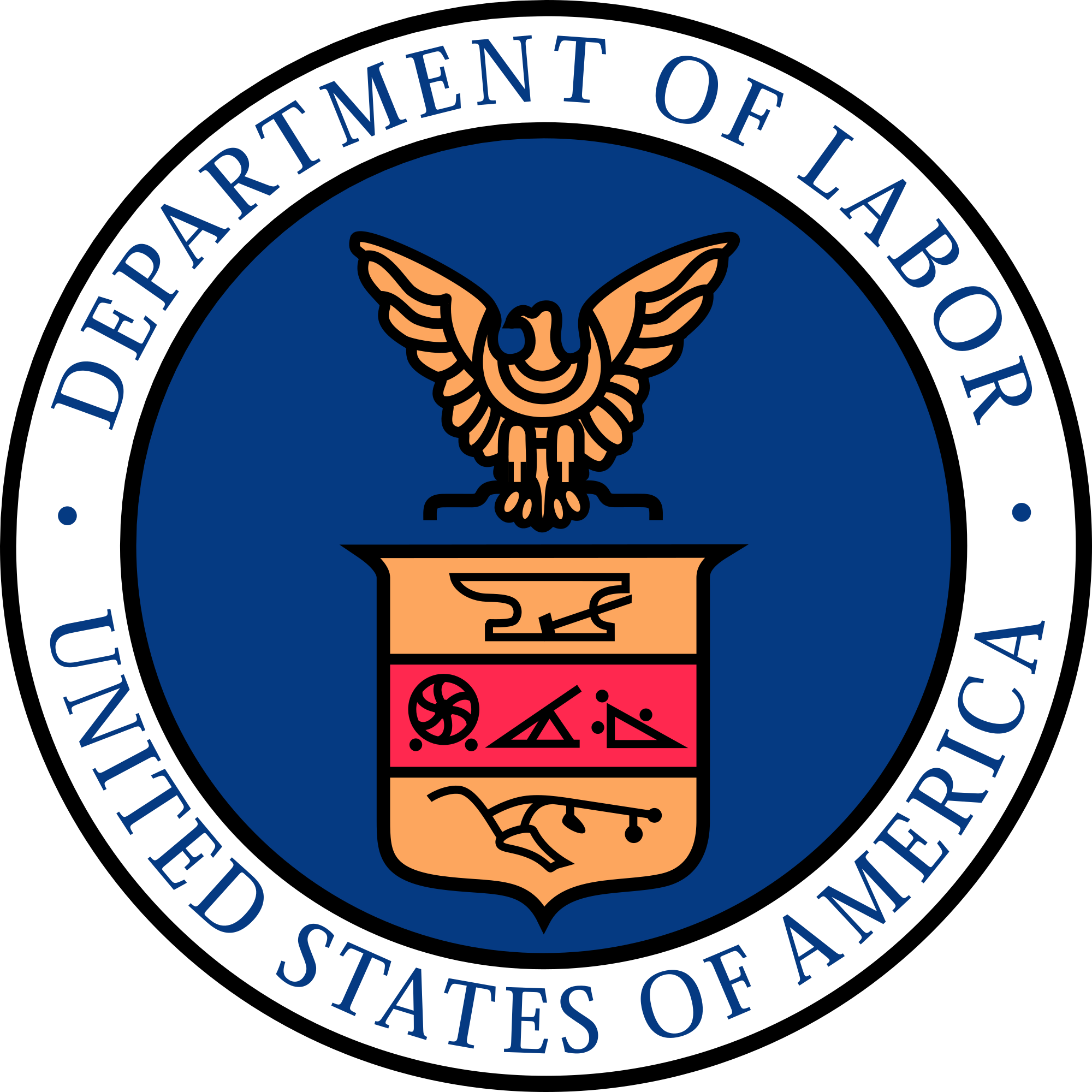
President Biden has yet to send his intended nomination of Julie Su to replace Walsh to the U.S. Senate. Secretary Walsh officially announced his resignation three weeks ago on February 16, 2023.
A DOL newsletter detailed Walsh’s last week as Secretary. In addition, he posted a blog with his thoughts on his tenure.
In Brief
Monday, March 6, 2023: We Wish to Thank Our Readers for Making Us #1 for the Third Year in Row

We think of the DE WIR, too, as your library allowing you to later go back to refresh your recollection of particular compliance developments or find dates and documents of interest using our global Boolean search tool (see right hand side of any week’s edition of the DE WIR).
Thanks again for your loyalty and for cheering us on. We are always open to suggestions about topics to discuss you think we are missing.
Monday, March 6, 2023: U.S. FTC Extended to April 19 the Public Comment Period on Its Proposed Rule to Ban Noncompete Clauses

The controversial proposed Rule would: (1) prohibit employers (nationwide) from using non-compete clauses in their contracts with employees, independent contractors, and “volunteers,” and (2) require employers to rescind existing non-competes and actively inform workers that they are no longer in effect. When the FTC published the proposal in January, we discussed the provisions here.
Tuesday, March 7, 2023: U.S. NLRB & Consumer Financial Protection Bureau Formally Agreed to Share Information

“Bad actors too often try to escape oversight by dodging between regulatory gaps and supervisory authorities,” said CFPB Director Chopra in a joint statement by the two agencies. “Today’s agreement will fill in cracks that may otherwise have let practices or products harmful to workers slip through,” Chopra added.
Despite the hoopla and empty words, it is difficult to imagine what “financial practices” within the CFPB’s jurisdiction would “harm workers” and give rise to violations of the National Labor Relations Act triggering the NLRB’s jurisdiction.
Looking Ahead:
Upcoming Date Reminders
December 2022: U.S. DOL WHD’s (now overdue) target date to publish a Notice of Proposed Rulemaking to Analyze Public Comments on its proposed rule regarding Nondisplacement of Qualified Workers Under Service Contracts (RIN: 1235-AA42)
December 2022: U.S. OSHA’s (now overdue) target date to publish its Final Rule on Occupational Exposure to COVID-19 in Healthcare Settings (RIN: 1218-AD36) (OSHA submitted this Final Rule to OMB on December 7, 2022)
December 2022: U.S. DOL’s OASAM’s (now overdue) target date to publish Proposed Rule on “Revision of the Regulations Implementing Section 188 of the Workforce Innovation and Opportunity Act (WIOA) to Clarify Nondiscrimination and Equal Opportunity Requirements and Obligations Related to Sex” (RIN: 1291-AA44)
February 2023: U.S. DOL WHD’s (now overdue) target date for its Final Rule on Updating the Davis-Bacon and Related Acts Regulations (RIN: 1235-AA40)
March 2023: OFCCP’s target date for its Notice of Proposed Rulemaking to Require Reporting of Subcontractors (RIN: 1250-AA15)
March 2023: OFCCP’s target date for its Final Rule on Pre-Enforcement Notice & Conciliation Procedures (RIN: 1250-AA14)
March 2023: OFCCP’s target date for its Final Rule on “Technical Amendments” to Update Jurisdictional Thresholds & Remove Gender Assumptive Pronouns (RIN: 1250-AA16)
Tuesday, March 14, 2023: Deadline to submit comments on nine federal agencies’ joint proposed rule on Partnerships with Faith-Based and Neighborhood Organizations – https://www.regulations.gov/commenton/VA-2023-VACO-0006-0001
Tuesday, March 14, 2023 (at 2 pm ET): First OMB Interagency Working Group Town Hall on Initial Proposals to Overhaul Federal Race & Ethnicity Data Collections – Participation information is here.
Friday, March 17, 2023 (at 2 pm ET): Second OMB Interagency Working Group Town Hall on Initial Proposals to Overhaul Federal Race & Ethnicity Data Collections – Participation information is here.
Saturday, March 18, 2023 (at 2 pm ET): Third OMB Interagency Working Group Town Hall on Initial Proposals to Overhaul Federal Race & Ethnicity Data Collections – Participation information is here.
Monday, March 20, 2023: Comments due on OFCCP’s proposed modifications to its complaint intake process – https://www.regulations.gov/commenton/OFCCP-2022-0005-0001
Thursday, March 23, 2023 (at 2 pm ET): DE Masterclass Employment Law Roundtable | How To Test Whether The AI You Are Using For Employment Selections Is Lawful – Register here
April 2023: OFCCP’s target date for its Notice of Proposed Rulemaking to “Modernize” Supply & Service Contractor Regulations (RIN: 1250-AA13)
Friday, April 7, 2023: Comments due on OFCCP’s request to extend, without change, VEVRAA information collection requirements – https://www.regulations.gov/commenton/DOL_FRDOC_0001-2057
Wednesday, April 12, 2023: Comments due on the Office of Management & Budget’s “Initial Proposals for Updating Race and Ethnicity Statistical Standards” – https://www.regulations.gov/commenton/OMB-2023-0001-0001
Wednesday, April 12 – Friday, April 14, 2023: DEAMcon23 Chicago (Registrations open now; Agenda now available here!)
Wednesday, April 19, 2023: Deadline to submit comments on FTC proposal to ban employers from implementing most worker non-compete agreements (previous March 20 deadline extended) – https://www.regulations.gov/commenton/FTC-2023-0007-0001
Sunday, April 30, 2023: Deadline to apply for 2023 HIRE Vets Medallion Award Program – https://www.hirevets.gov/
May 2023: U.S. DOL WHD’s target date for its Notice of Proposed Rulemaking on Defining and Delimiting the Exemptions for Executive, Administrative, Professional, Outside Sales and Computer Employees (RIN: 1235-AA39)
May 2023: U.S. DOL WHD’s target date for its Final Rule on Employee or Independent Contractor Classification Under the Fair Labor Standards Act (RIN: 1235-AA43)
August 2023: U.S. NLRB’s target date for its Final Rule on Standard for Determining Joint-Employer Status (under the NLRA) (RIN: 3142-AA21)
August 2023: U.S. NLRB’s target date for its Final Election Protection Rule (RIN: 3142-AA22)
THIS COLUMN IS MEANT TO ASSIST IN A GENERAL UNDERSTANDING OF THE CURRENT LAW AND PRACTICE RELATING TO OFCCP. IT IS NOT TO BE REGARDED AS LEGAL ADVICE. COMPANIES OR INDIVIDUALS WITH PARTICULAR QUESTIONS SHOULD SEEK ADVICE OF COUNSEL.
SUBSCRIBE.
Compliance Alerts
Compliance Tips
Week In Review (WIR)
Subscribe to receive alerts, news and updates on all things related to OFCCP compliance as it applies to federal contractors.
OFCCP Compliance Text Alerts
Get OFCCP compliance alerts on your cell phone. Text the word compliance to 55678 and confirm your subscription. Provider message and data rates may apply.

